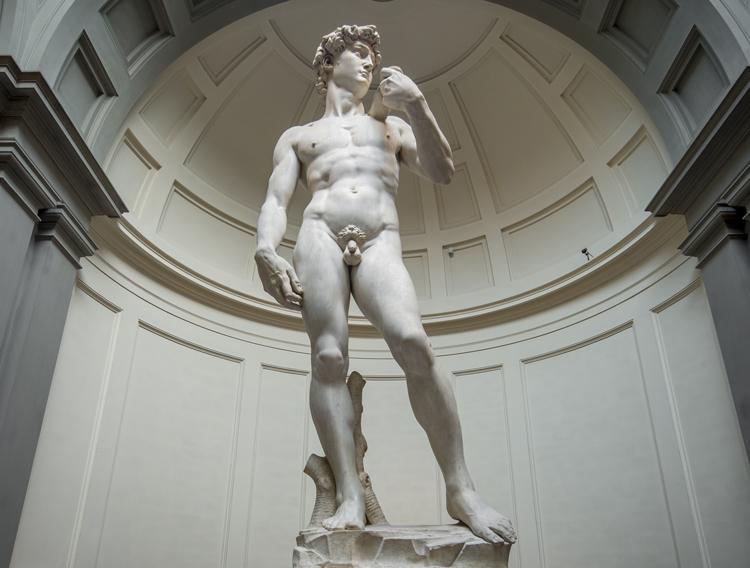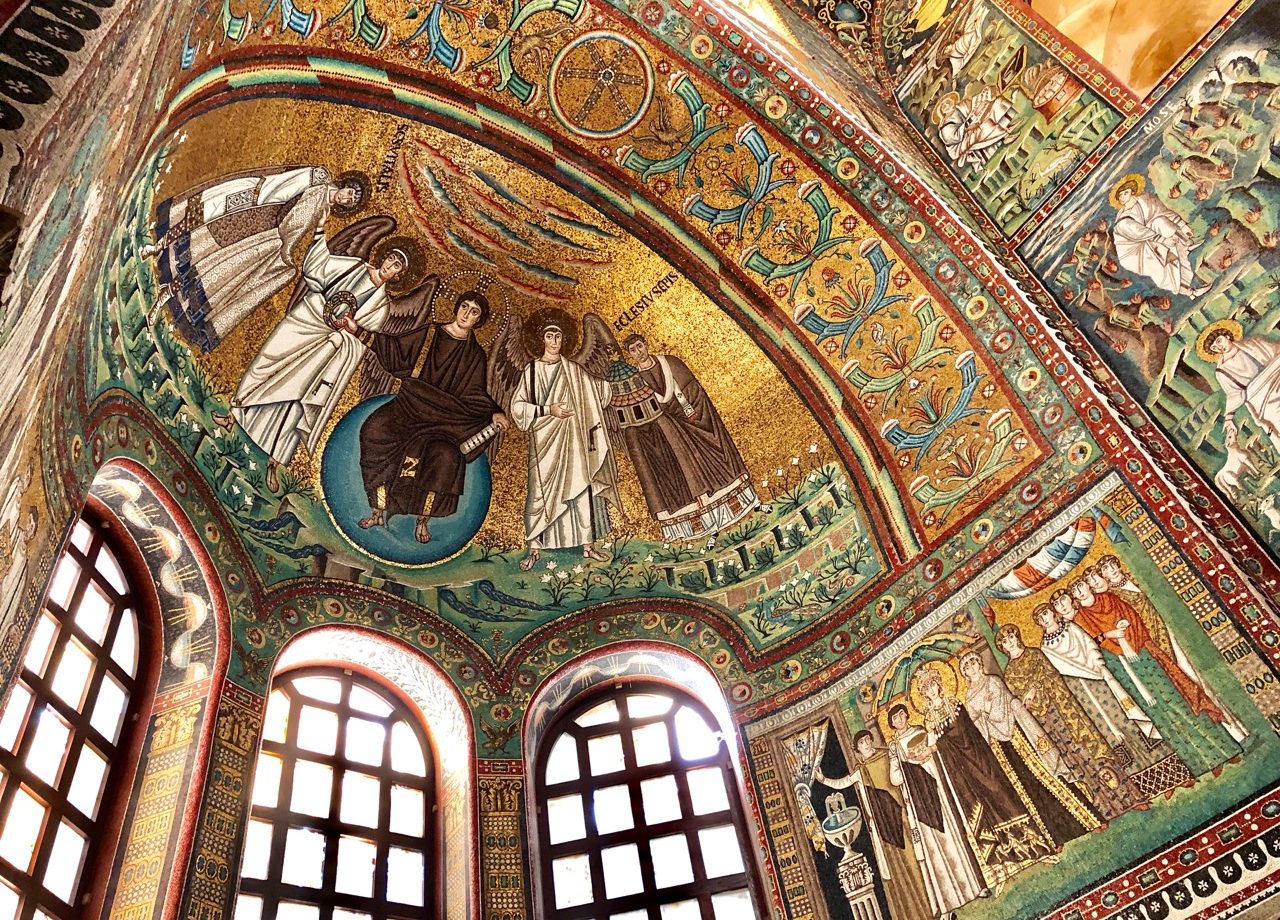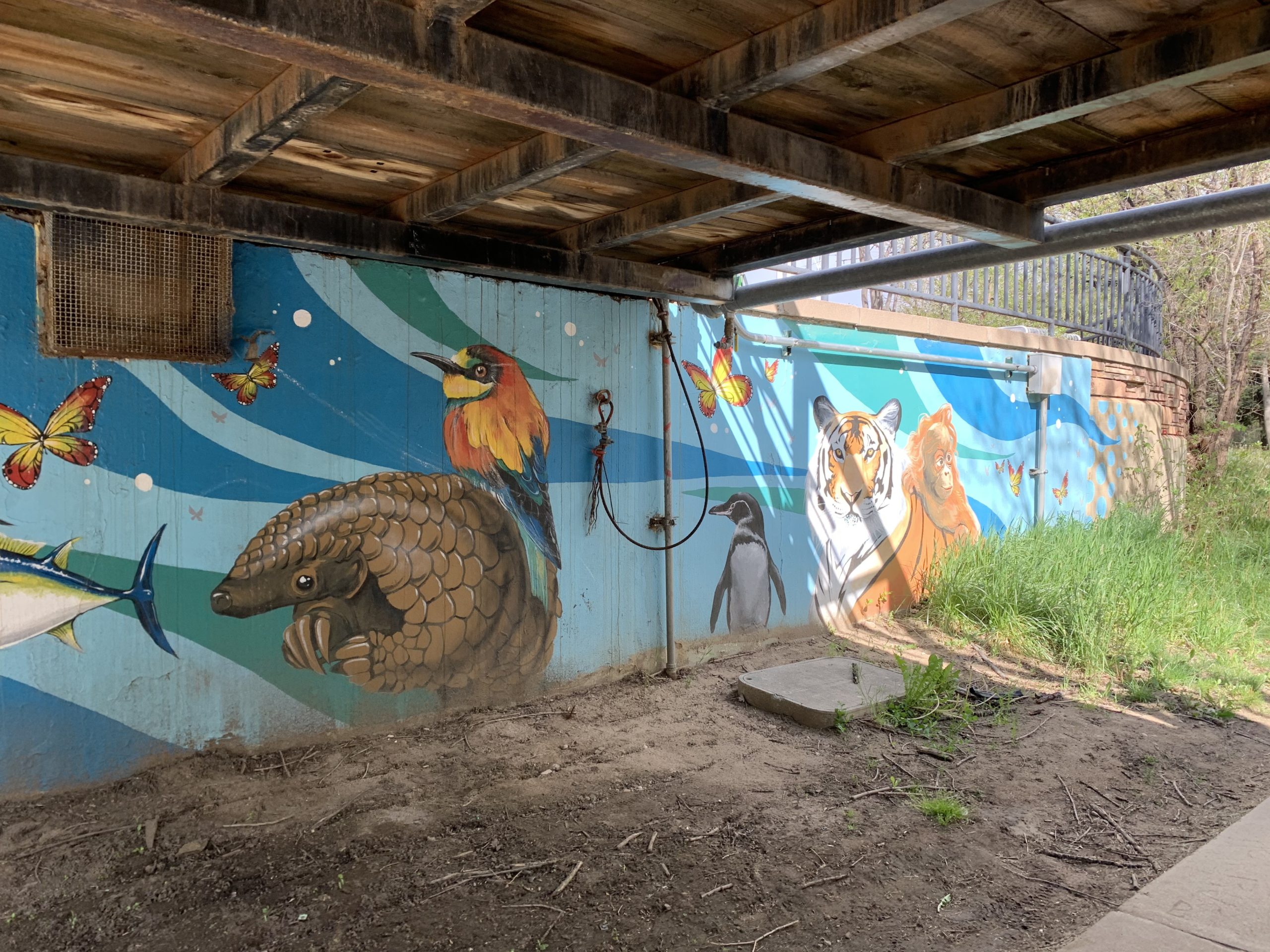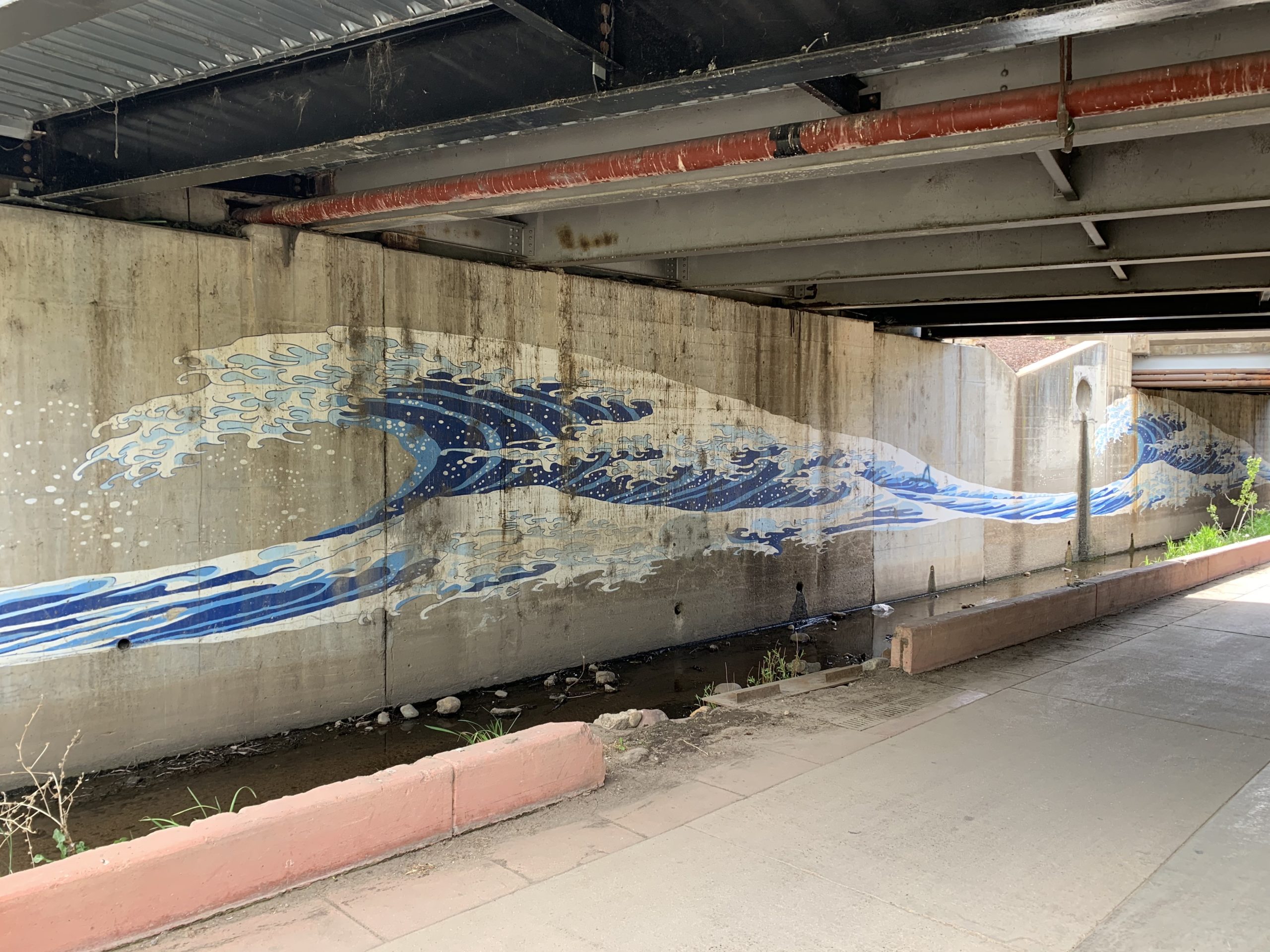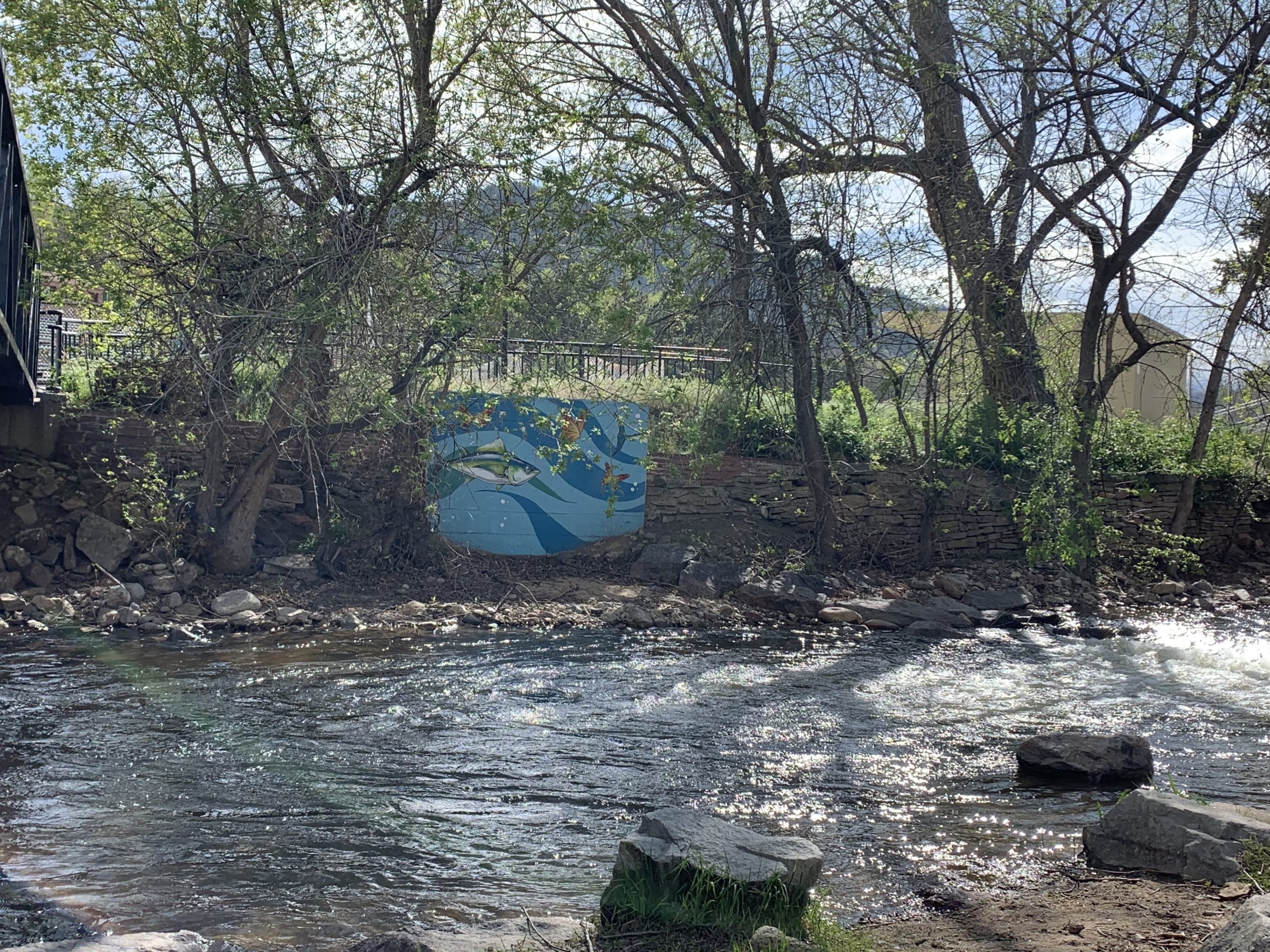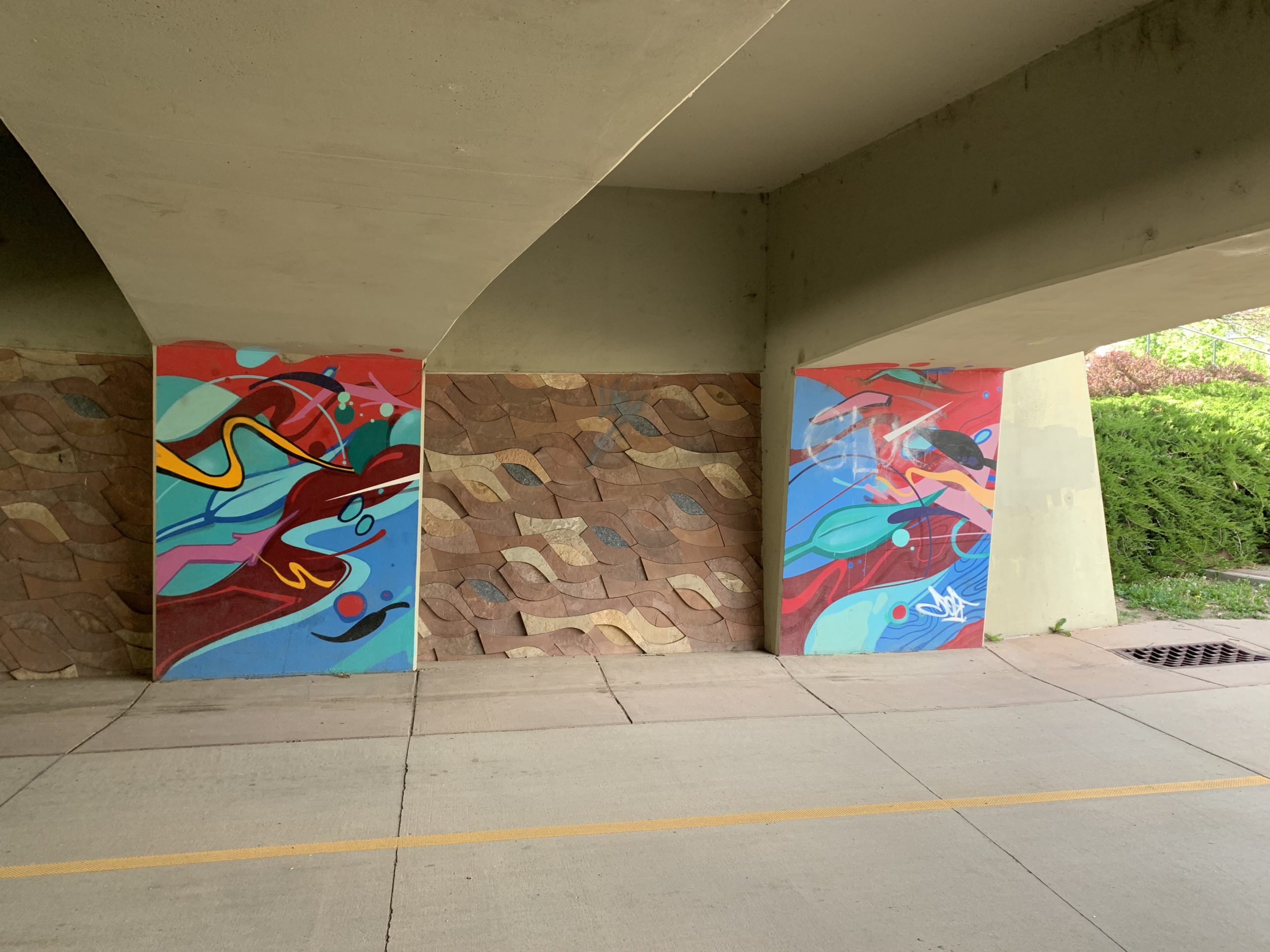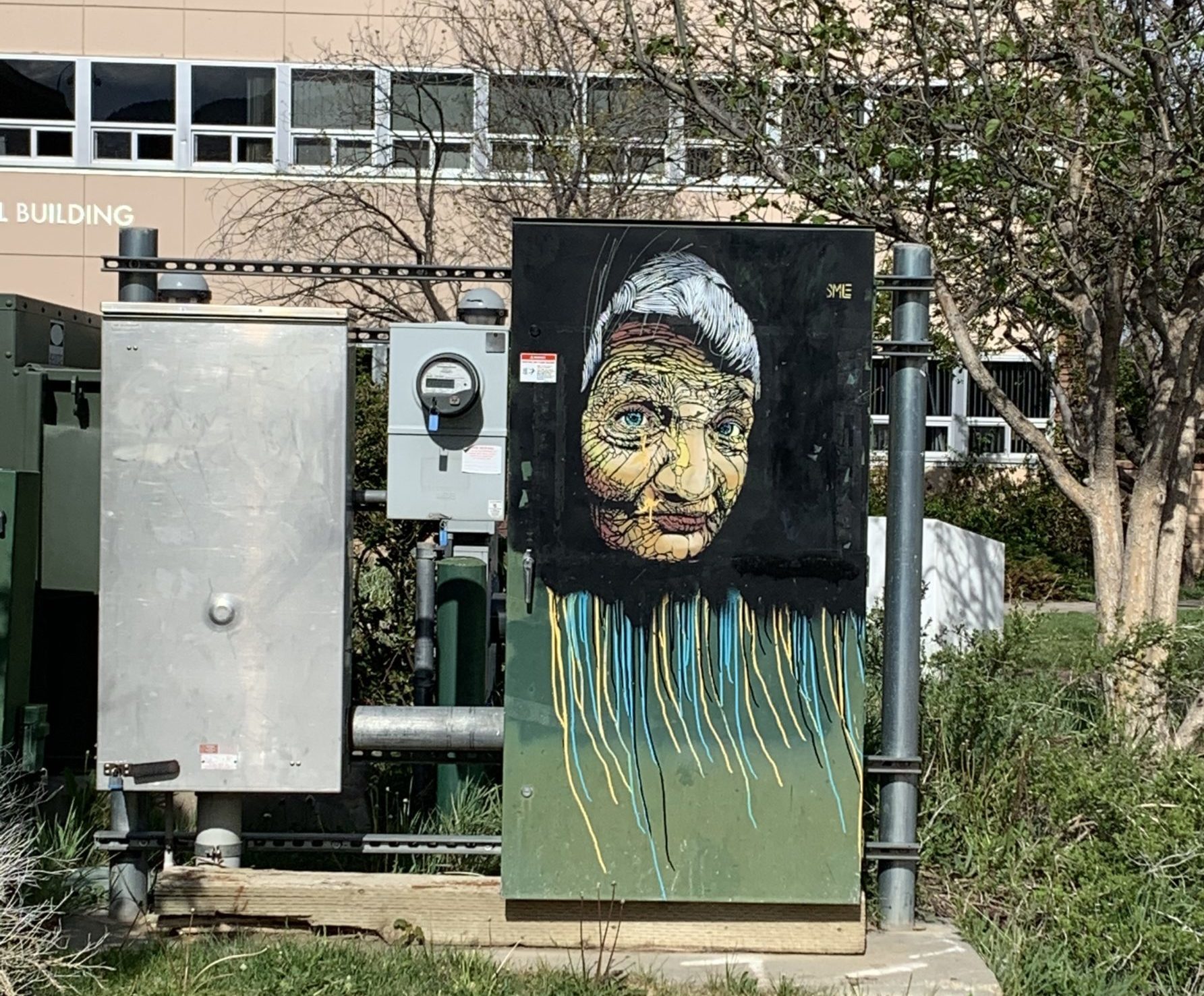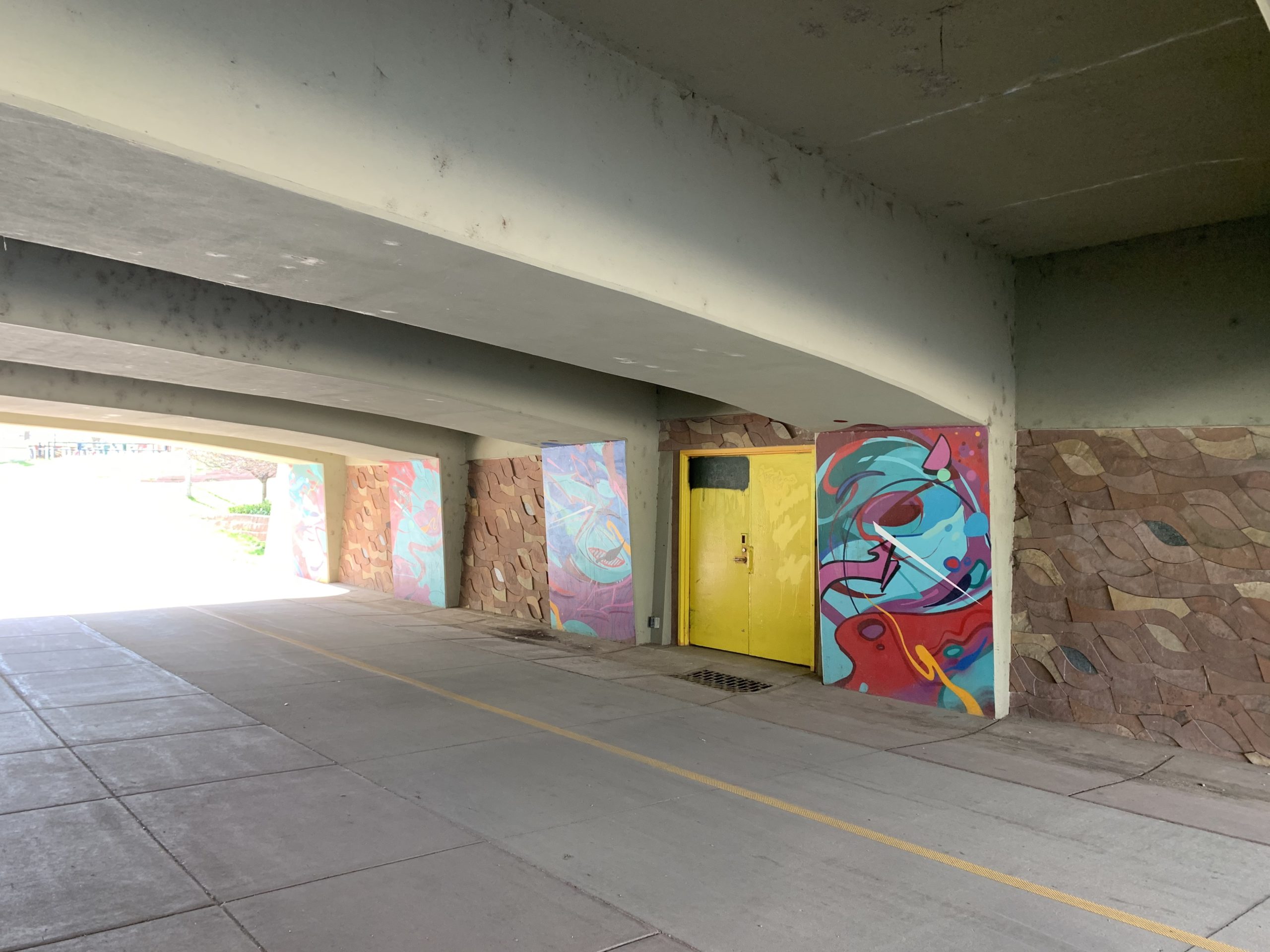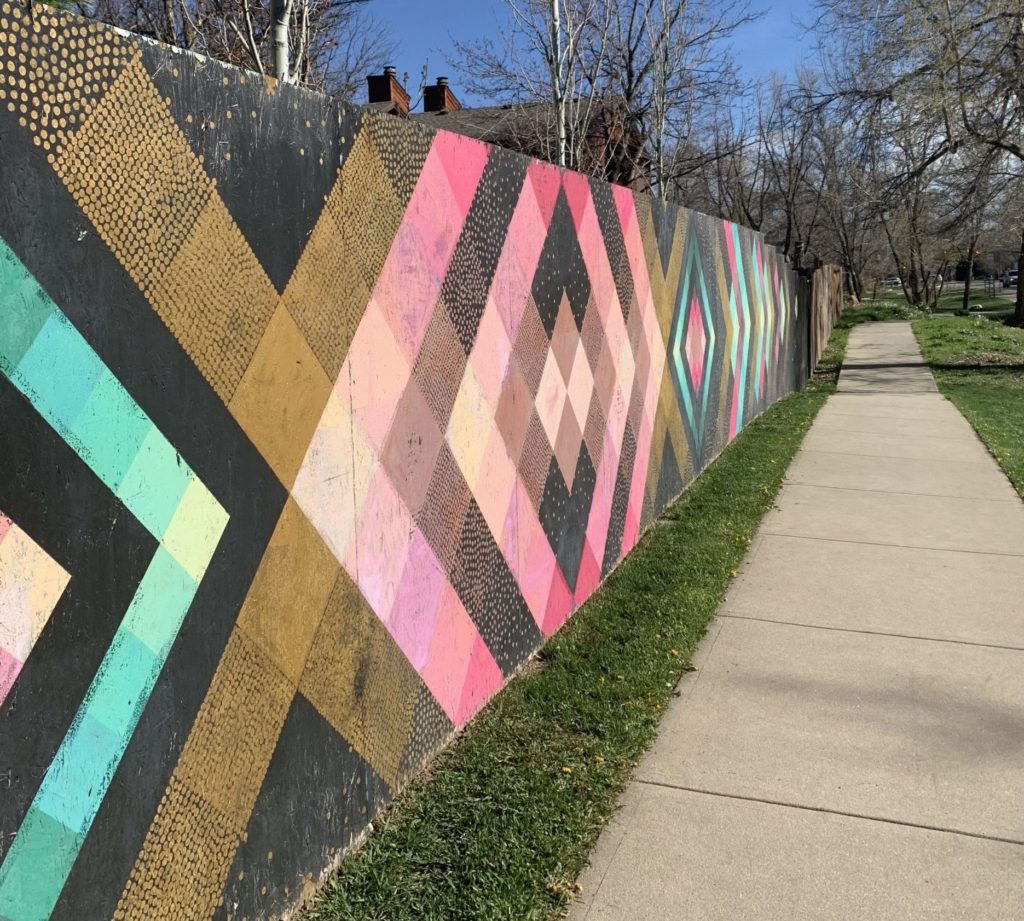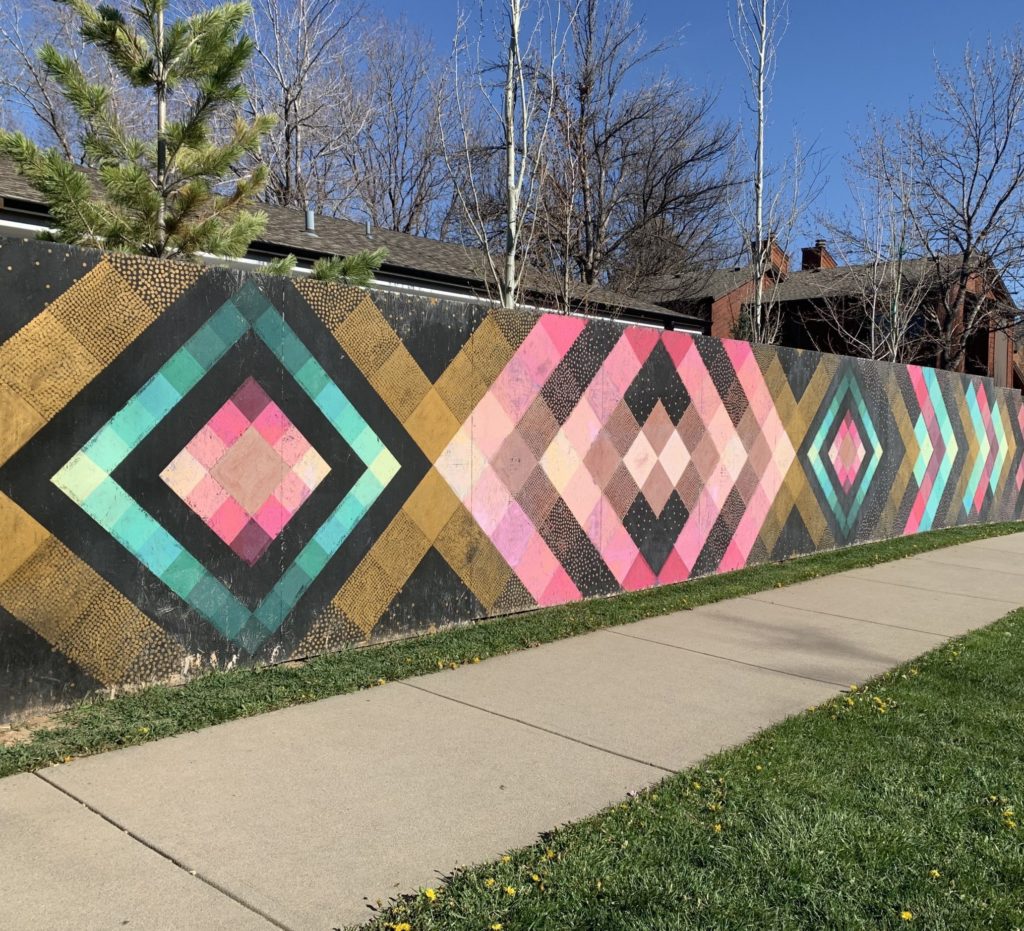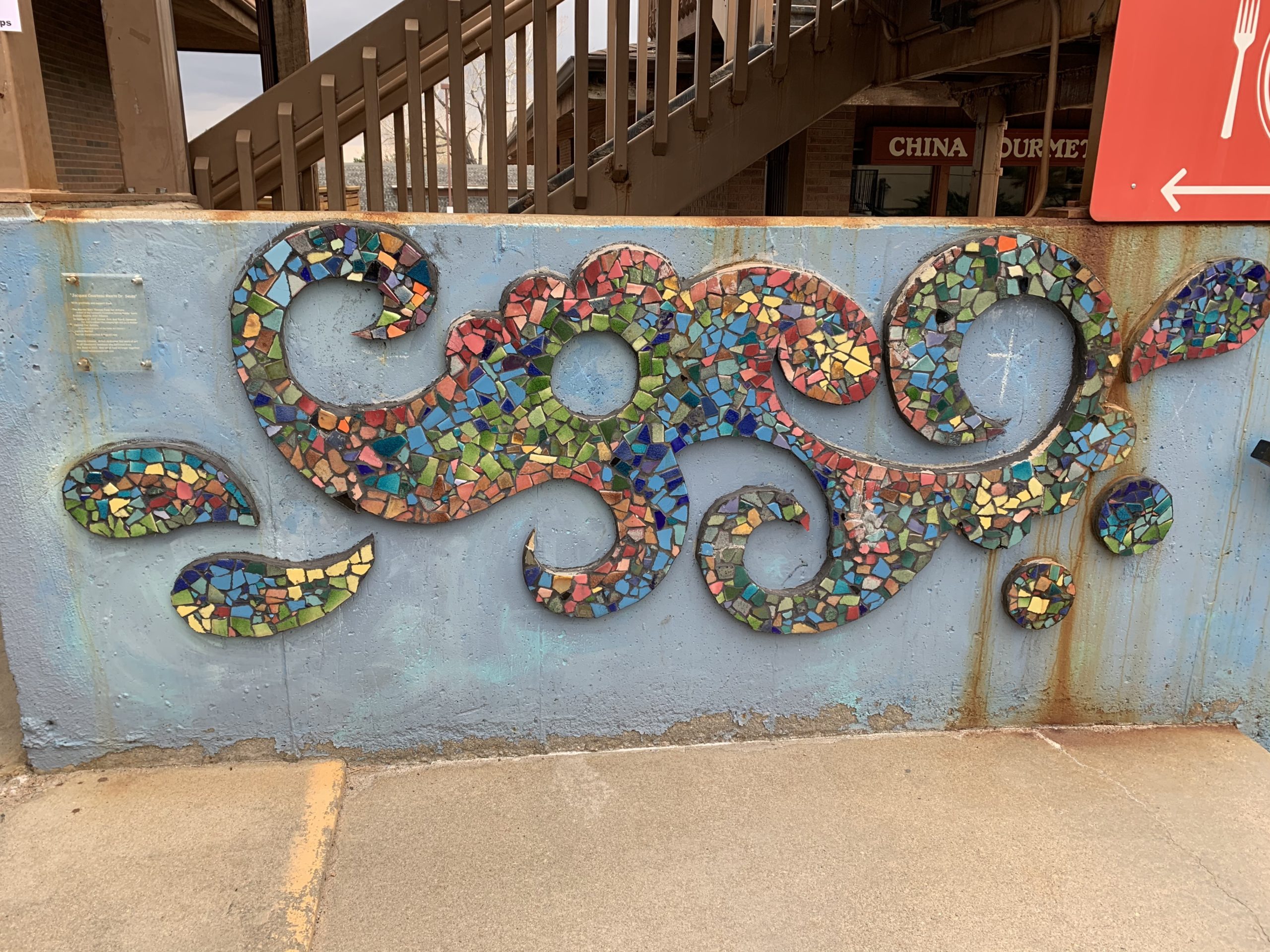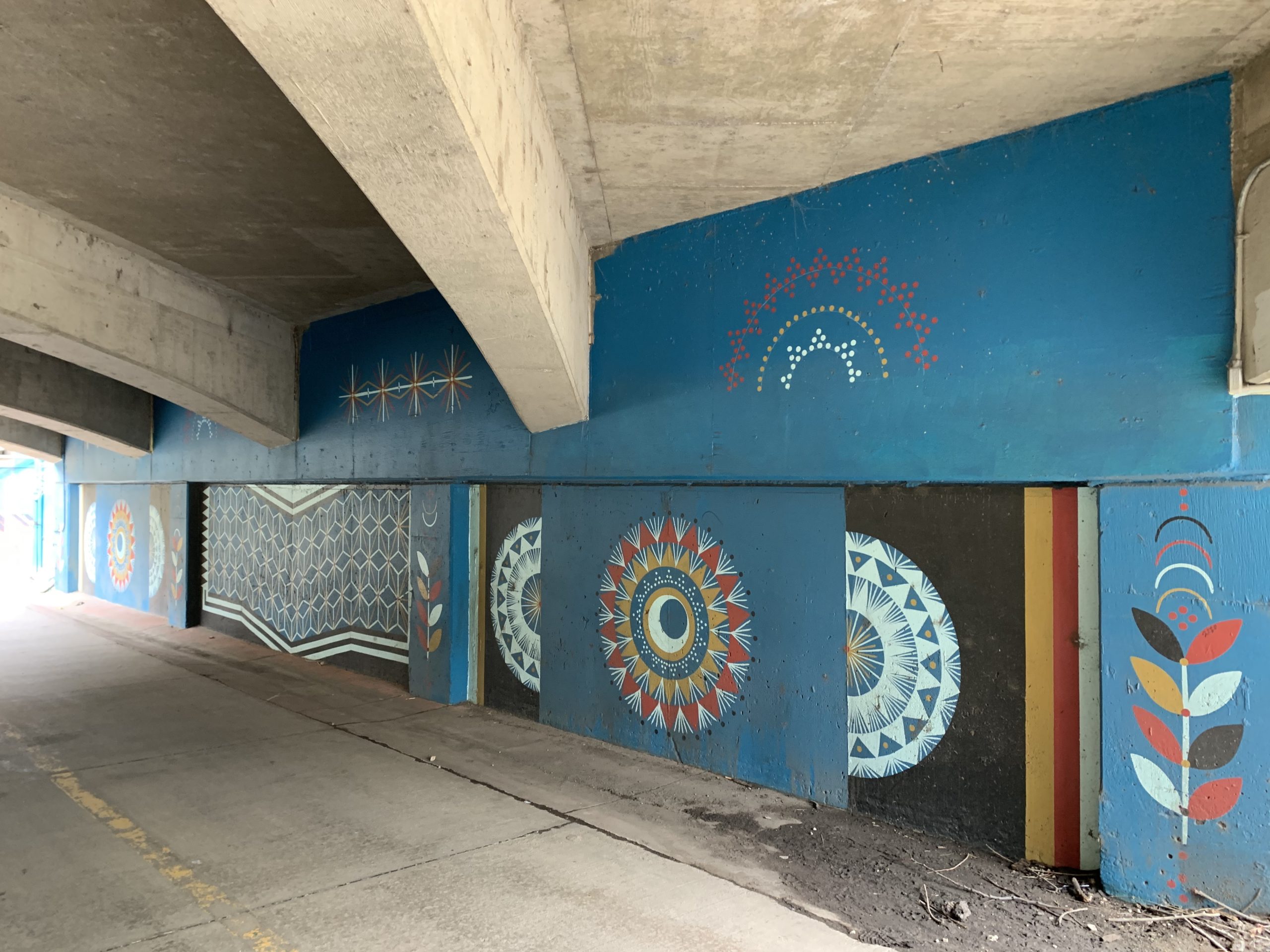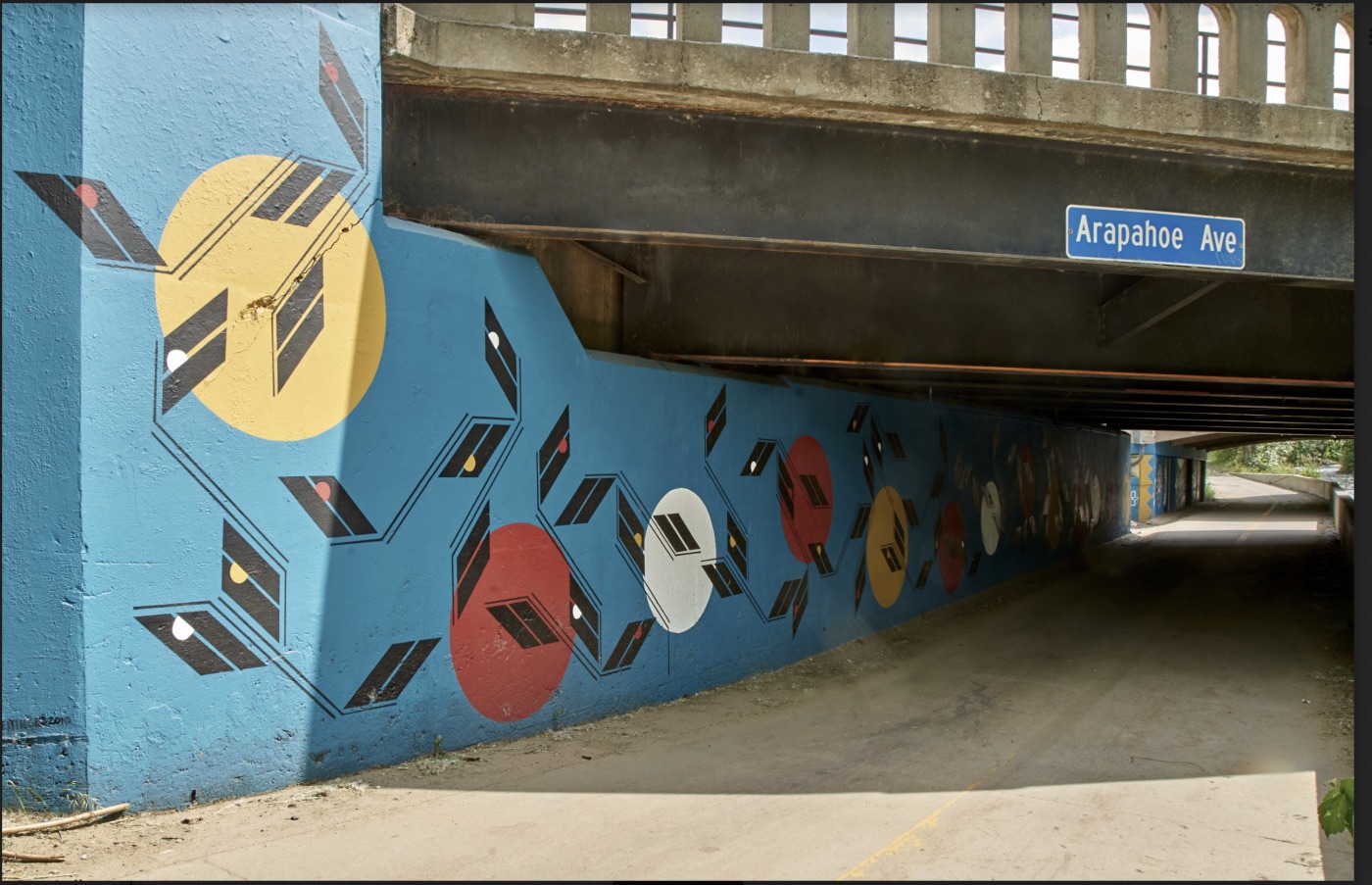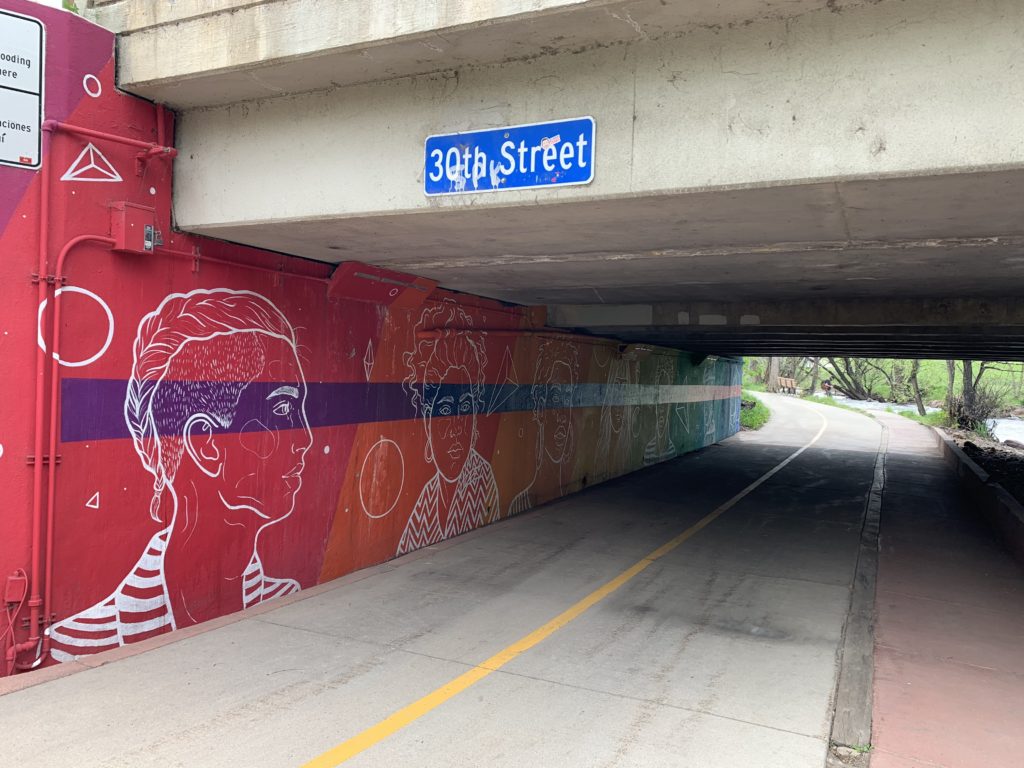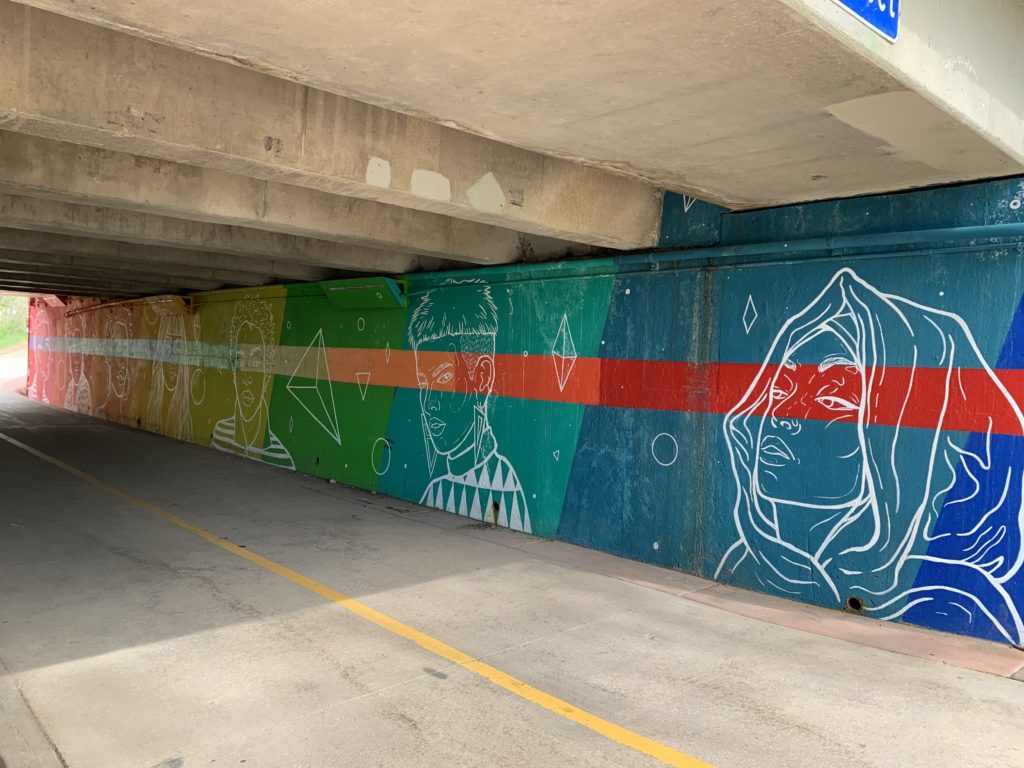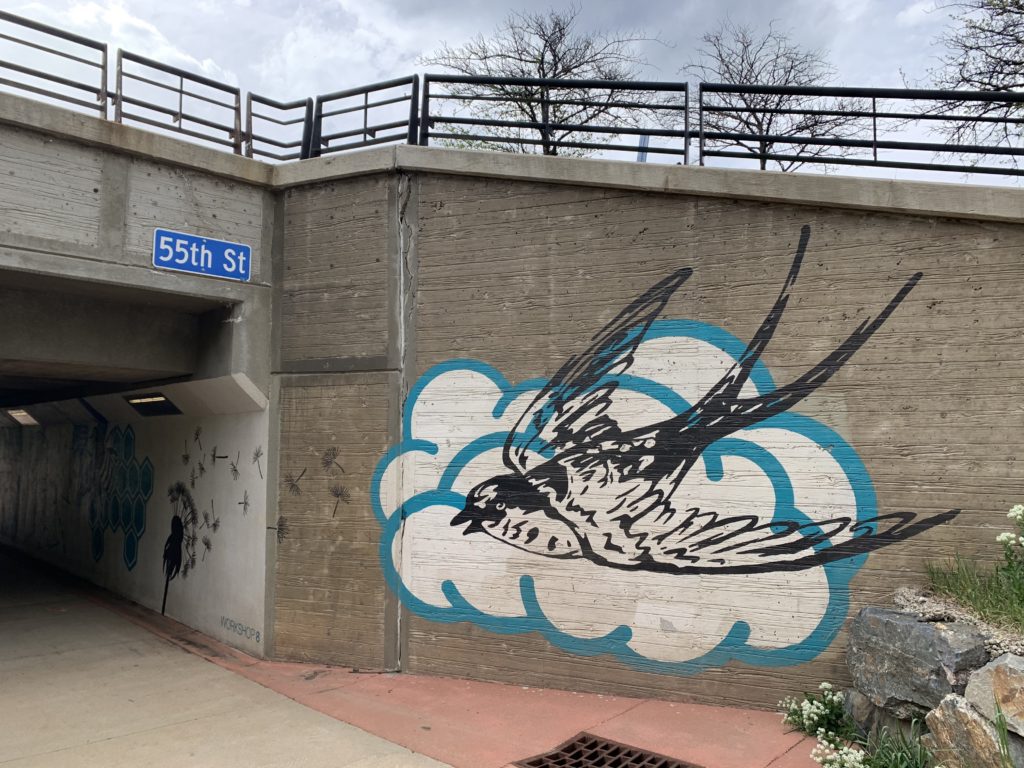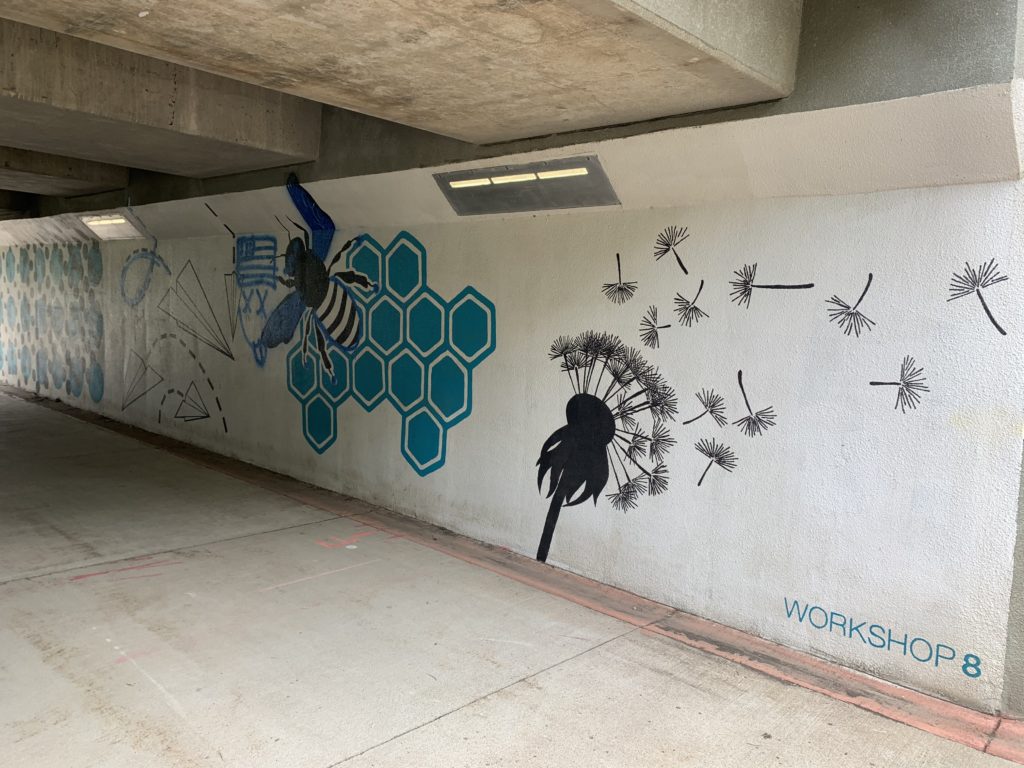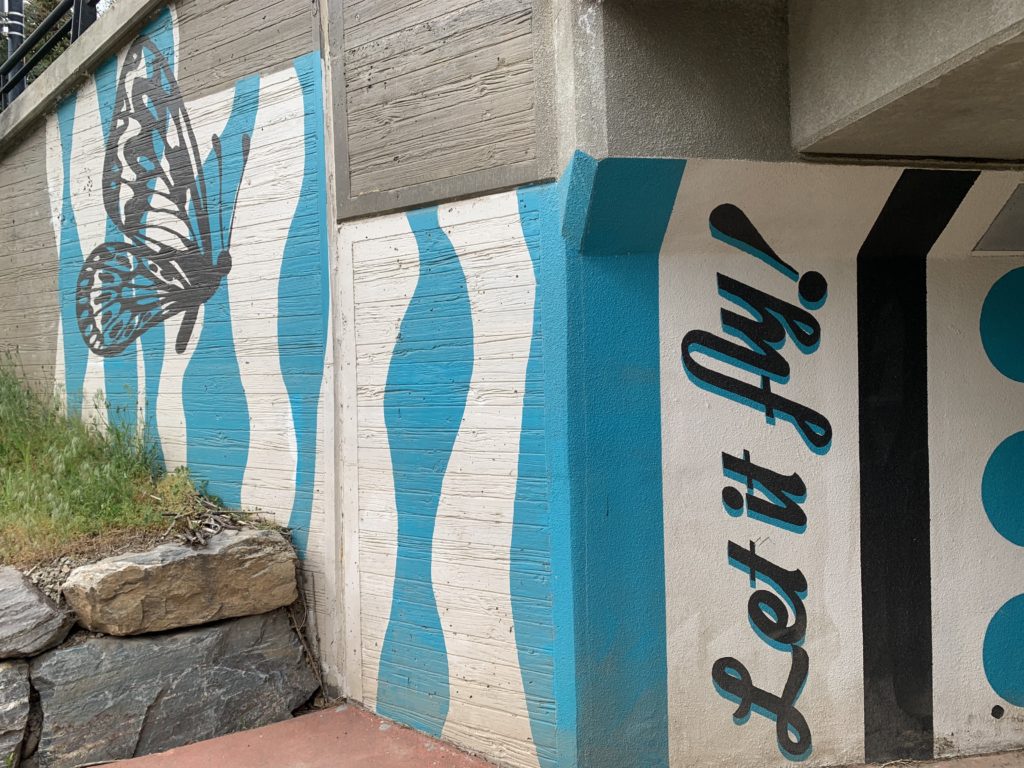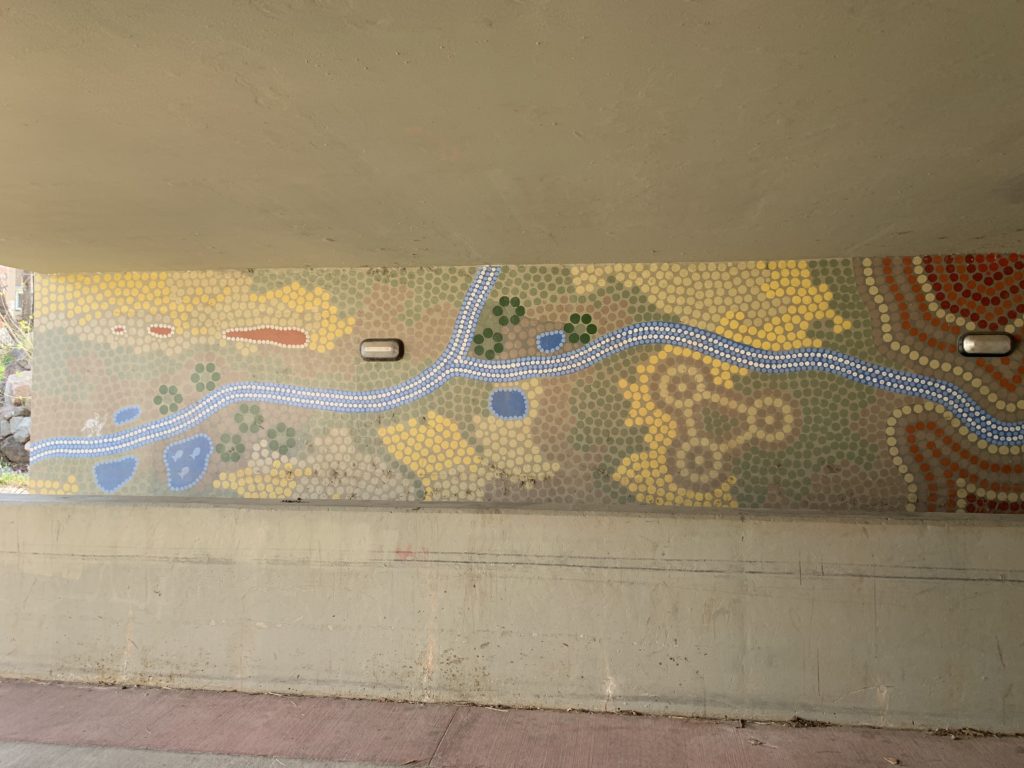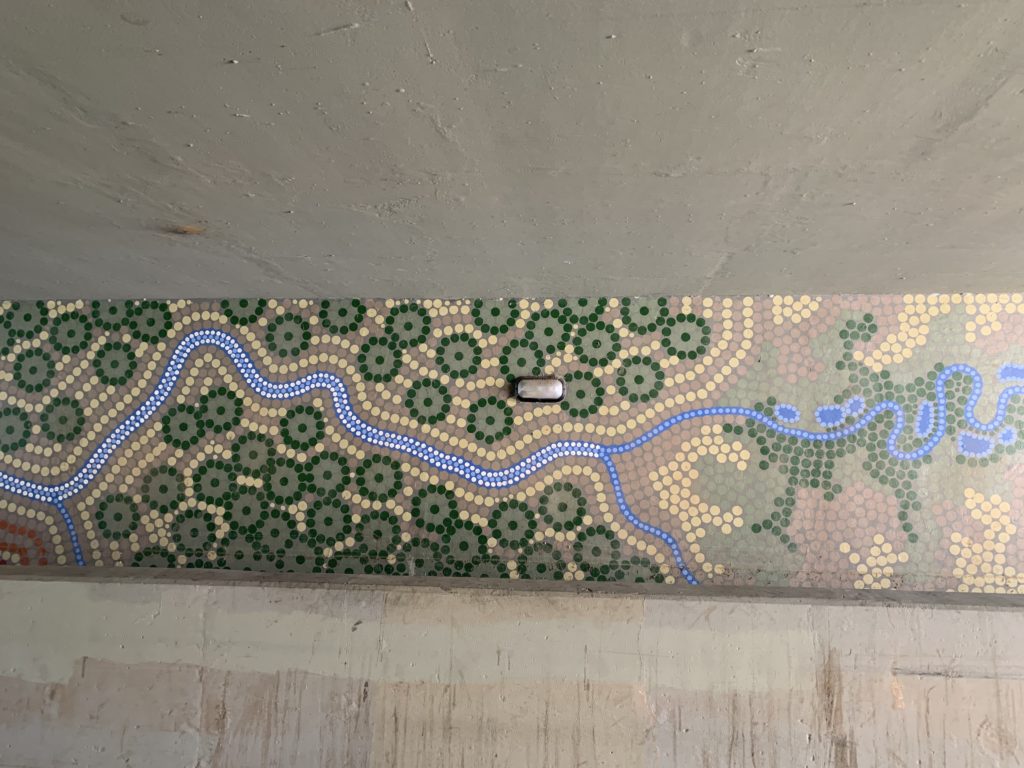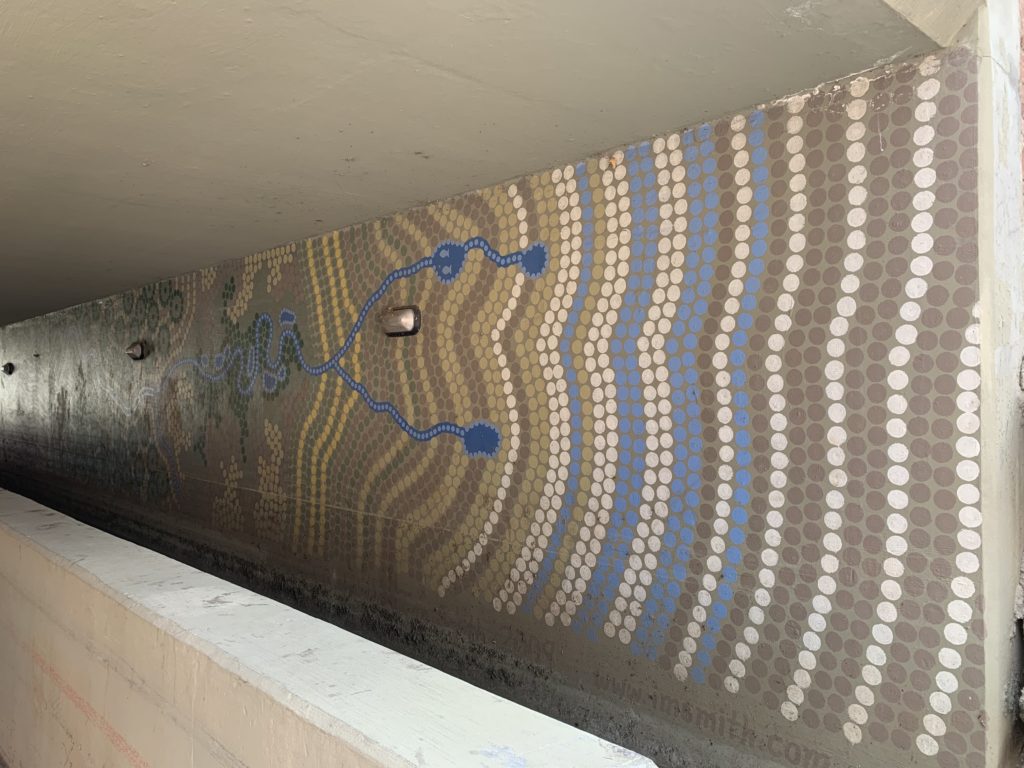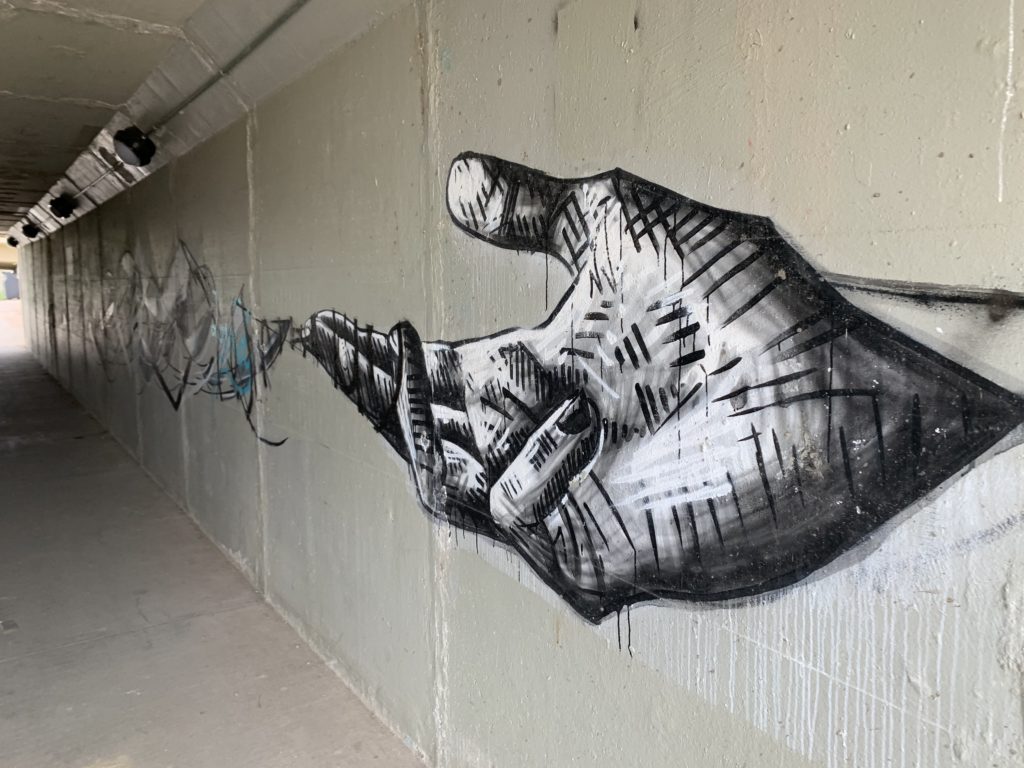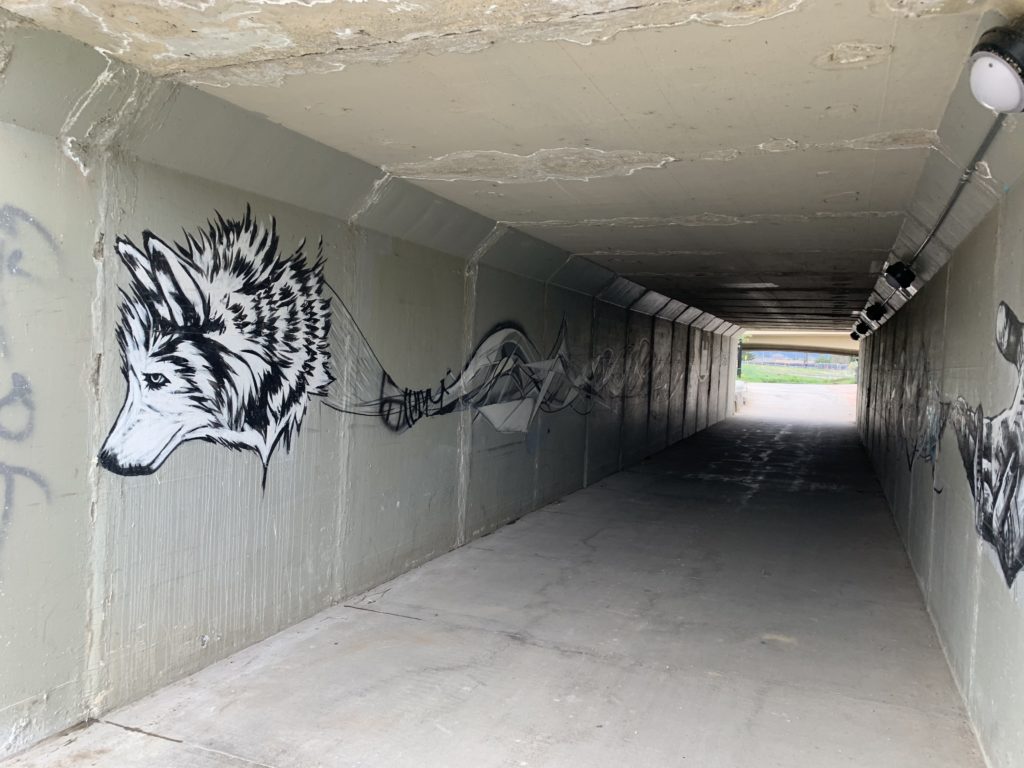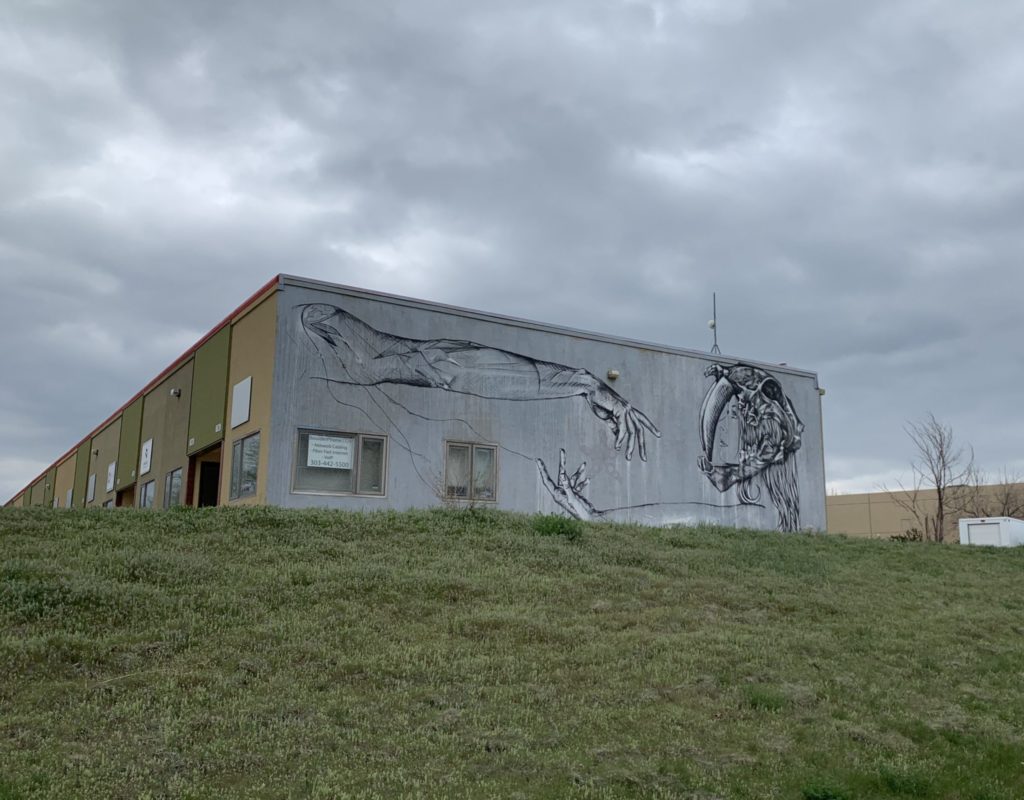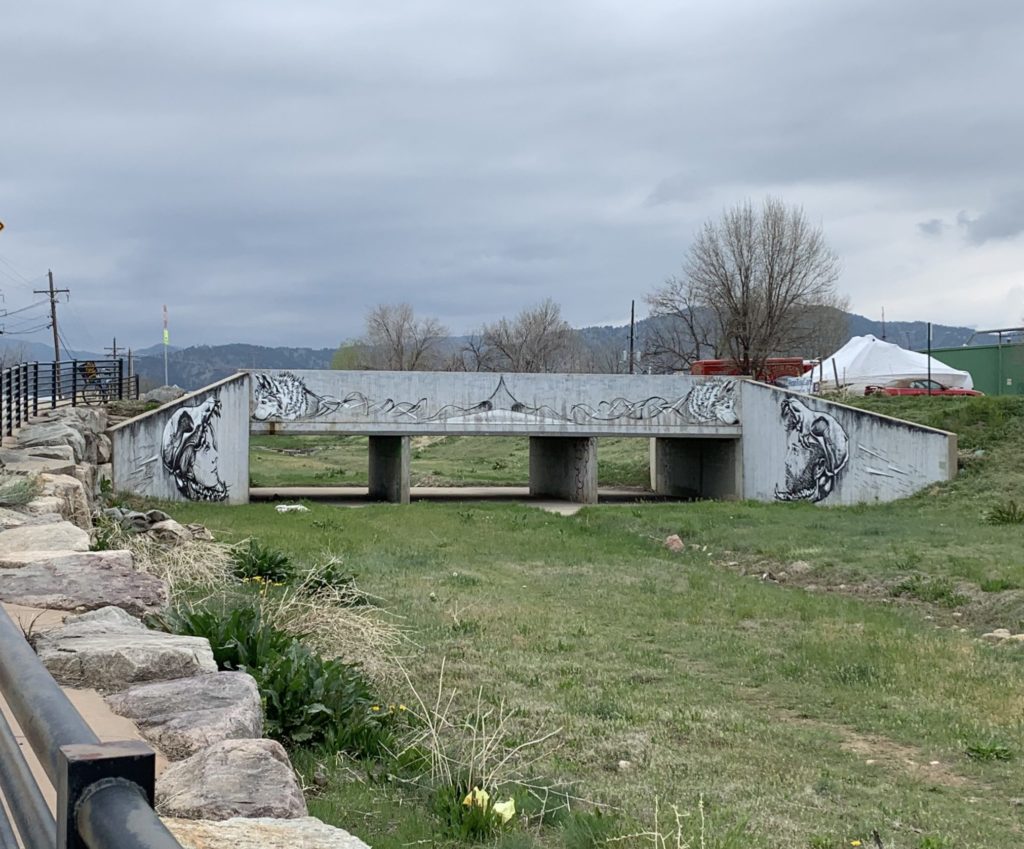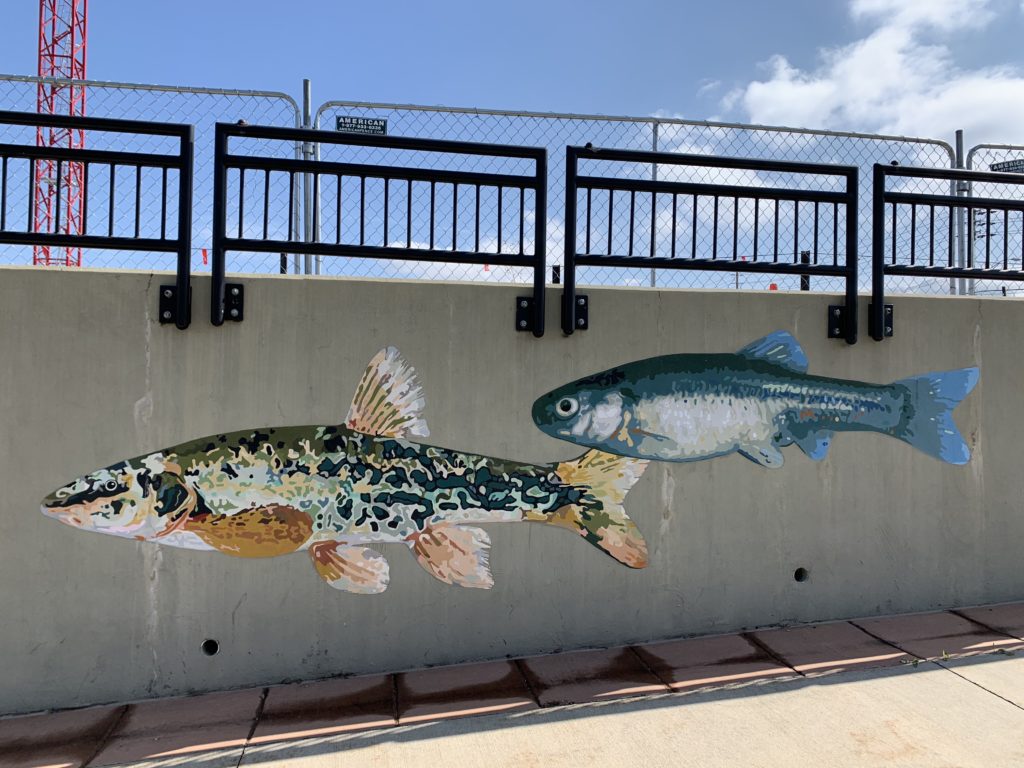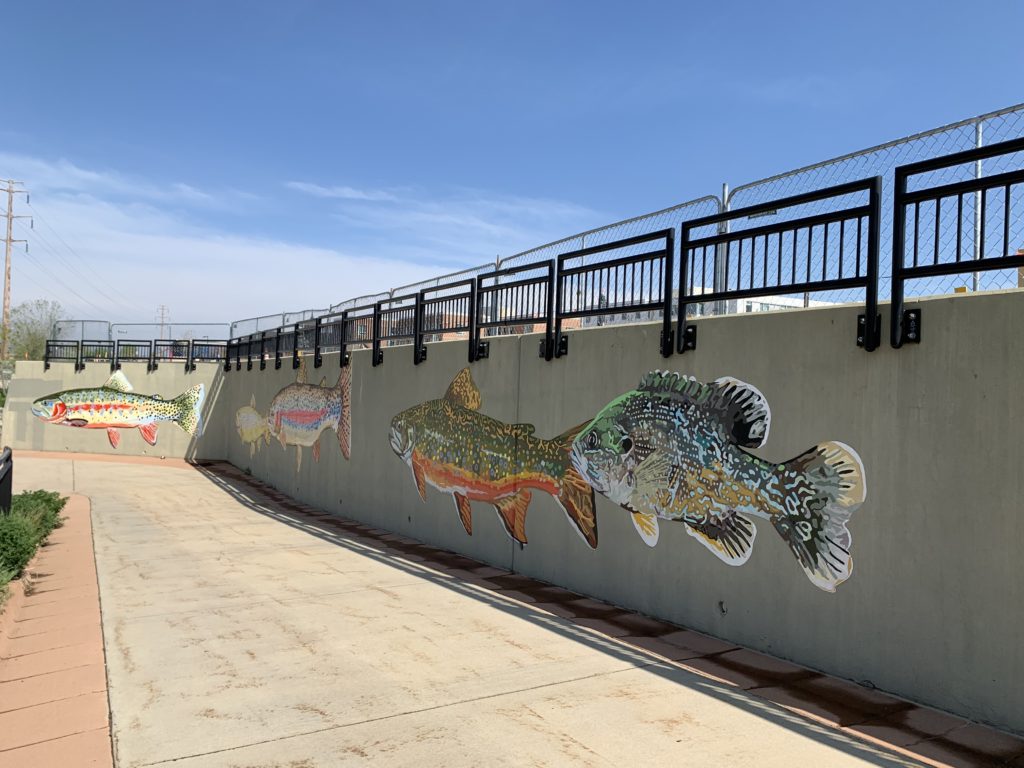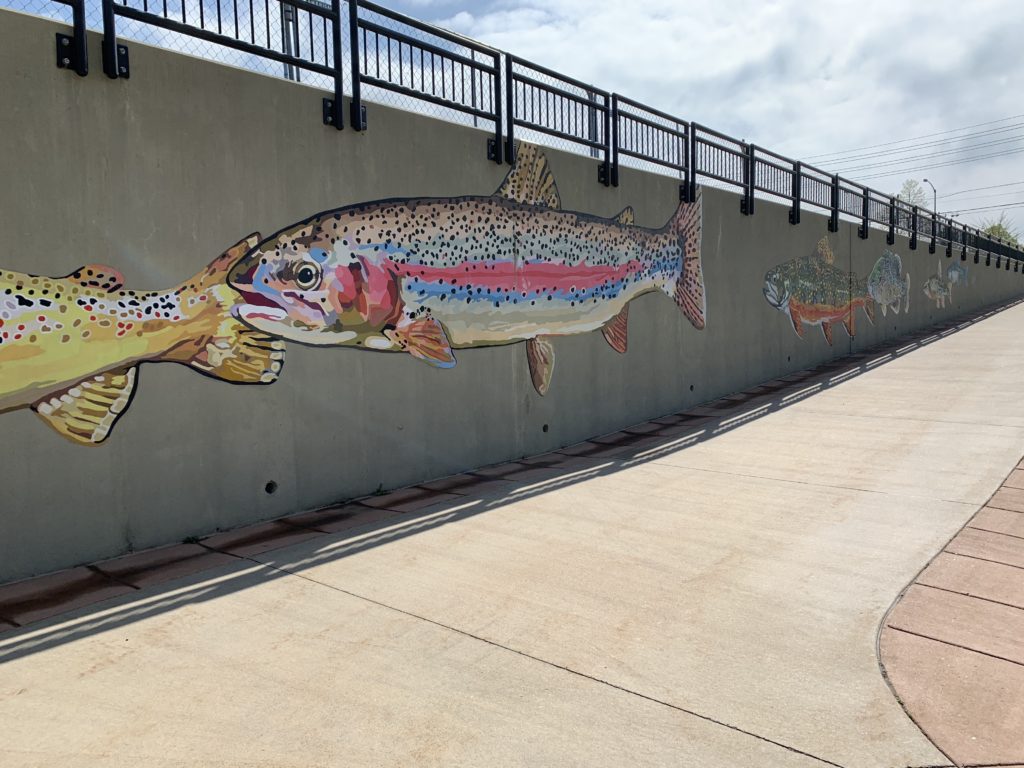By: Karissa Courtney
May 2020
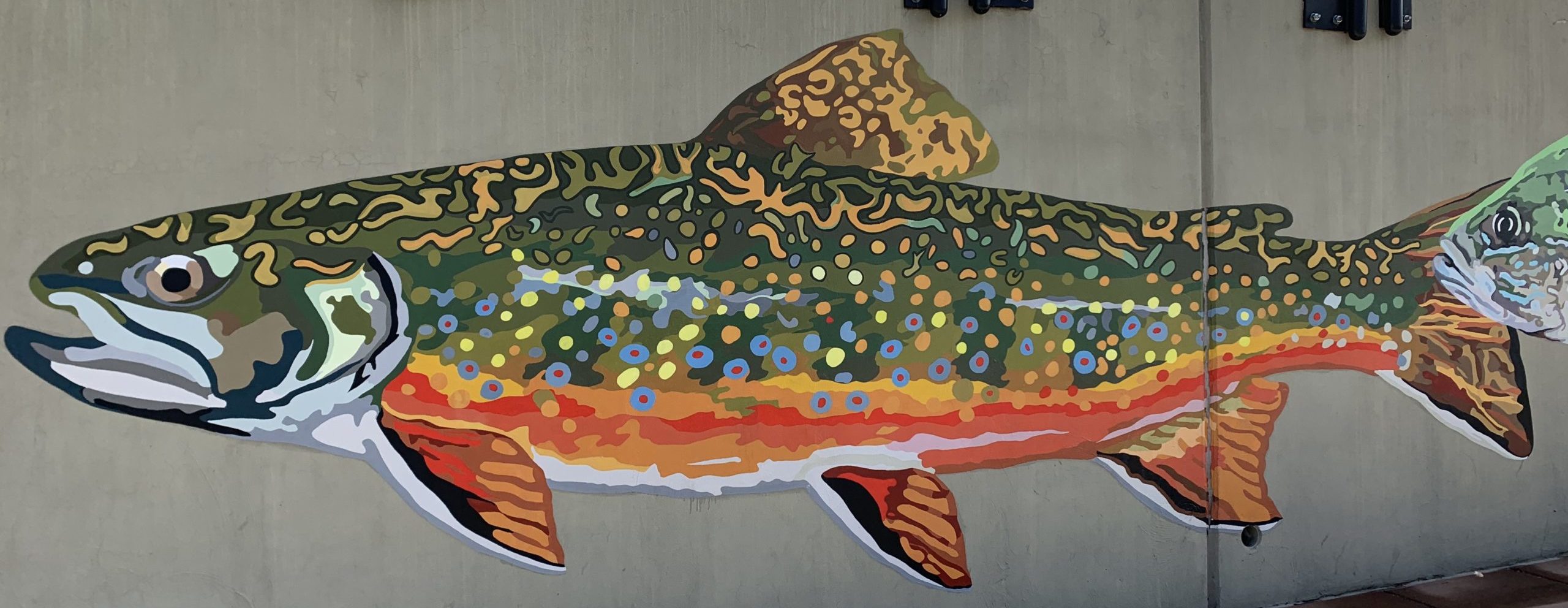
A BRIEF HISTORY OF PUBLIC ART
“Public art can express community values, enhance our environment, transform a landscape, heighten our awareness, or question our assumptions. Placed in public sites, this art is there for everyone, a form of collective community expression. Public art is a reflection of how we see the world – the artist’s response to our time and place combined with our own sense of who we are.” – Association for Public Art, Penny Balkin Bach
When you first think of public art, you might be picturing Italy, with the bronze and marble statues littering the cities, famous artists remembered. Like many things, we have the Greeks to thank for the induction of public art, known to them primarily as sculptural representations of religion and society. An example of this was the Parthenon on the Acropolis in Athens, built c. 447-422 BCE, and later the statues erected of the Roman Emperor. The Roman church produced the Ravenna Mosaics (c. 400-600) located in the Italian city of Ravenna. Later monumental buildings such as the Chartres Cathedral in Chartres, France and the Notre Dame Cathedral in Paris were adorned with beautiful religious art including statues, mosaic, and stained-glass. The Italian Renaissance (15th and 16th centuries) was a time largely devoted to religious public art, including Giotto’s Scrovegni Chapel frescoes, Donatello’s bronze statue David, and Michelangelo’s marble sculpture Pieta and Sistine Chapel murals. Later, during the 18th and 19th centuries, public art made a shift away from Christian depictions, to more secular ones such as of kings, bishops, and other heroes. The Statue of Liberty (built in 1975), the Eiffel Tower (built 1887-89), the Paris Opera House (1860-75), and the UK Houses of Parliament (1839-52) are all examples from this time. In contemporary times, public art has taken on many forms: political art, land art, architecture, graffiti, murals, sculpture, and more.
- Michelangelos David
- The Parthenon, Greece
- Ravenna Mosaics
Public art has been racing through our country for centuries now and seeing all of the beautiful shapes it can take on are inspiring. A brief history of public art in Boulder is one that includes all art forms: film, music, theater, painting, sculpture, photography, etc. Here, we will discuss just the visual arts. Since its inception, and we don’t mean to forget the indigenous people who lived here before us (we don’t know what the early art-makers in the area were creating), artists would come to Boulder –some just visiting and others making Boulder home. In 1876, Joe Sturtevant arrived and became Boulder’s first official photographer. A few years later in 1895, Jean Sherwood assembled a group of summer painters, dubbed the “Bluebirds”. About one hundred years later, Marcelee Gralapp, director of the library from 1966-2008, recognized the need for city funded projects of all art-forms. In 1979, she helped start the Boulder Arts Commission and at around the same time, Karen Ripley-Dugan took over the Boulder Arts Center and renamed it the Boulder Center for the Visual Arts, and [again] it was later renamed the Boulder Museum of Contemporary Art, a non-collecting exhibition area. Although art was around and each department had work done on their own, a formal public arts program didn’t exist in Boulder until 2016.
PUBLIC ART IN BOULDER
The Community Cultural Plan (you can read it HERE), put into place at the end of 2015, was a formal write up of the public arts plan for the city. It is now what the public arts program looks back on for guidance and support in what they do:
“This document is also a toolbox for city government and describes the ways in which public art, economic tools, services for practicing artists, and support of cultural organizations, neighborhoods, and diverse communities all intersect with social resiliency, environmental sustainability, and economic prosperity to achieve a thriving and beautiful city.”
The main goal of the plan is to have a city-wide perspective and extensive time-span (at least through 2024, we are now in the Middle Phase of the Plan) and seeks to answer the question, “What is the community’s vision for arts, culture and the creative industries?”, which could be ever-changing. Their priorities also lie with advancing sustainable practices, encouraging diversity, and promoting the success of Boulder communities. The Plan lists these as its main strategy:
- support our cultural organizations
- reinvent our Public Art program
- create and enhance venues
- enhance the vitality of the creative economy
- emphasize culture in neighborhoods and communities
- support individual artists and creative professionals
- advance civic dialogue, awareness, and participation
- engage our youth
The policies and procedures for acquiring and maintaining public art is outlined in the Public Art Policy, 2018 (you can read it HERE).
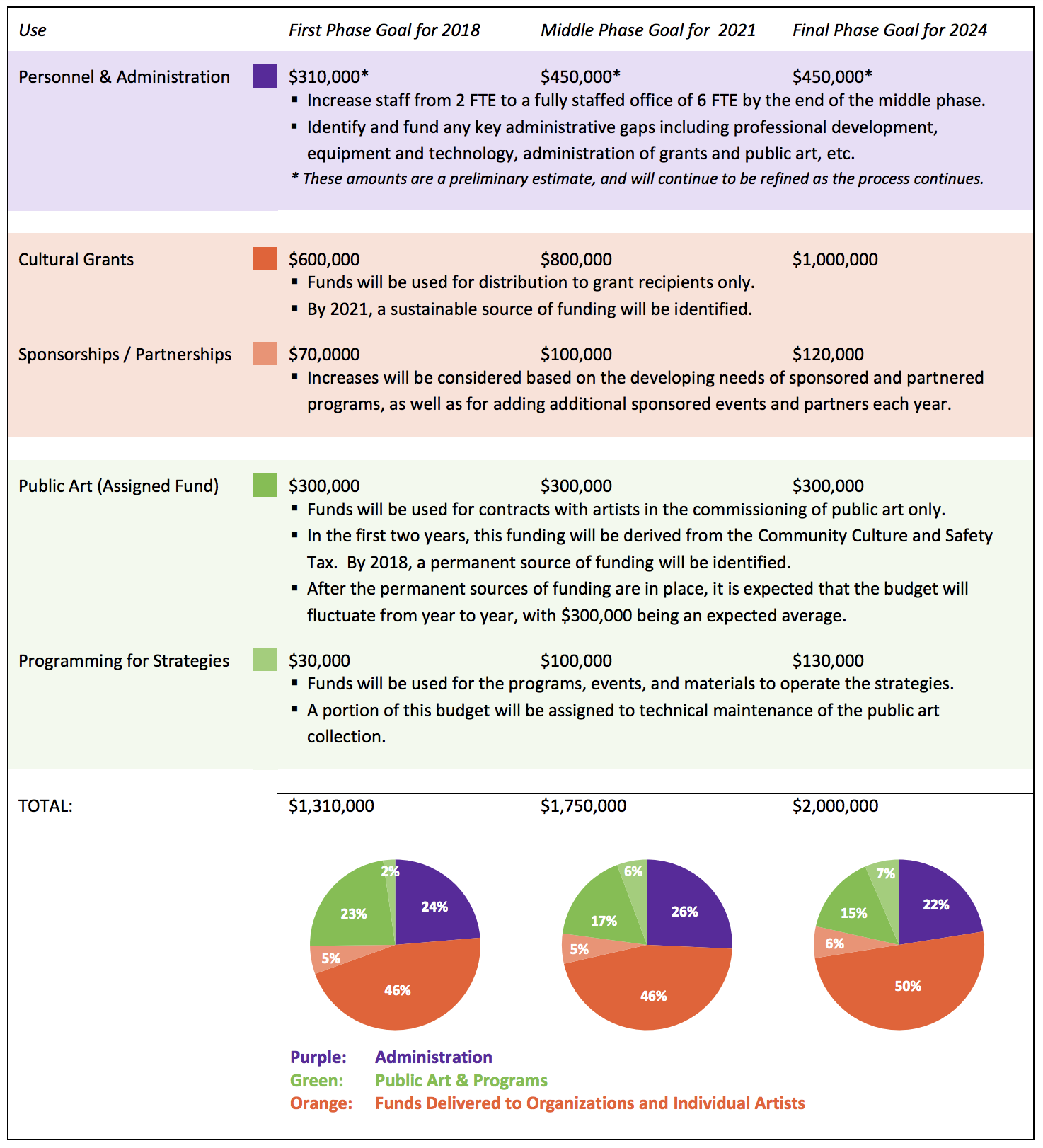
The 3 stages of the plan and the funding goals
(Murals along the Boulder Creek path)
The Creative Neighborhoods program, started in 2018 and spearheaded by Vink, highlights the creativity that is all around us, and in us. Murals, free little libraries (READ MORE HERE), concerts, and COVID-19 projects all help build relationships within the community. Specifically, the COVID-19 projects that are happening right now have been launched by a partnership between the Office of Arts and Culture and Create Boulder to support artists and “social infrastructure” during this strange time in history. This program has quickly delivered funds to artists who have lost positions during the restrictions to control the COVID-19 Pandemic. Each project that happens through this program will be a purchase of artist services to either a) help their neighbors stay connected during restrictions, or b) after restrictions are lifted, helping people to reconnect and adjust to new social conditions. The program has run out of funding for new projects at this time.
- A neighborhood mural by Jason Garcia
Currently there are about 200 projects (urban design pieces and murals) across the city that have been supported by City Council and the public, as well as 25 commissioned murals through Creative Neighborhoods. Artists were initially found by doing outreach, but there is now a huge demand (2020 Mural Artist Roster). Calls for artist open in the spring (Feb-April), but this year it opened in January and closed at the end of March. The artists just have to live around the Front Range and have examples of their prior work. Additionally, the artists are subject to the Public Art Implementation Plan, which states that all projects must adhere to these criteria:
Inherent Artistic Quality
Context
Ability to Maintain and Install
Time Horizon of Artwork
Diversity
Uniqueness
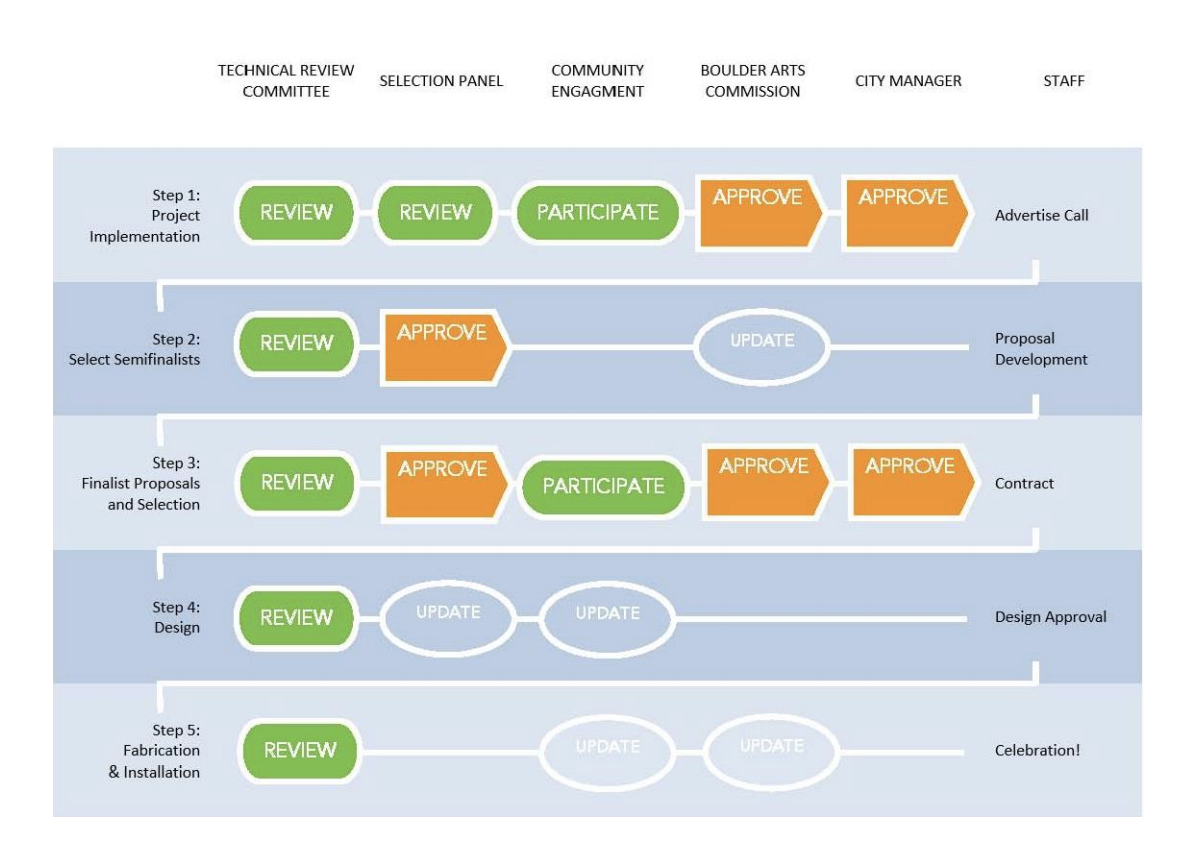
The typical process- not always the case- as described by the Public Art Implementation Plan
Leah Brenner Clack works on the NOBO Art District Board, as well as with the City and Street Wise Arts, facilitating and curating art creation (mostly murals) for the community. Brenner Clack started Street Wise Arts in 2015 to connect business and art through grant funding, installing public artwork, and the creation of murals. Related to the outreach of this organization, is the Mural Festival, hosted every September by Arts Martin Acres (a group of neighbors committed to building community through the arts that Brenner Clack is also a part of).
WHERE ARTS AND THE PATHS INTERSECT
How could we talk about public art in Boulder without mentioning the paths? The Paths of Boulder house a good portion of the public art and are a great gathering space to view the beauty of our local creatives. Just going on a stroll or a bike-ride can yield much exposure to the murals and sculptures that are scattered throughout the city. Mandy Vink is a main person in the community that makes the art happen. She currently oversees the Public Art Program for the City of Boulder, as well as the Creative Neighborhoods Program. She closely follows the Community Cultural Plan in bringing commissions, murals, stand-alone projects, etc. to Boulder.
Locations for projects depend on where there are resources, following the Municipal Code (Title 14), where there is a lot of vandalism, and considering underserved areas in Boulder that don’t have much public art. Many of the spots chosen are along the beloved paths, many murals coming and going. The paths are also a great place for murals because they often are along the floodways, and sculptures could potentially be hazardous objects. There is a strong partnership with transportation and Parks and Rec, as well as the Colorado Creative Industries: The Art in Public Places Program which gets together once a year with the cities of Colorado (and Laramie, WY) to brainstorm county-wide and state-wide initiatives. Boulder also closely partners with Fort Collins and Laramie specifically, who have great public art programs as well.
Vink has said that the City of Boulder has climate commitments and the Public Art Program is always looking to have their art and culture be within that commitment. They use paint that would otherwise go to the landfill, many murals coming out that have been a response to the significance of nature in everyday lives, Greenways are exempt (no art permitted here to preserve the integrity of the space), and they are always trying to bring art and the environment together. An example of such a mural is one by Patrick Maxcy and a collaboration with Boulder High School students, of endangered species along the Boulder Creek Path right by the high school.
LOCAL ARTISTS HIGHLIGHT
If there are so many projects around Boulder, who are these amazing artists?
Annette Coleman, who we mentioned in the article on Boulder Little Libraries, not only worked for the NOBO Art District, but also put some her own art up around town. One of which is located in Lucky’s Market courtyard and features a mosaic that was installed right after the flood.
The plaque at the bottom reads: “Annette Coleman, Artist dedicates this work of art to all community members who suffered from the flood in 2013. May we all deal stronger together.”
- Annette Coleman Mosaic located in Lucky’s Market Courtyard in NOBO
Another great artist that has put murals up around town, is Sandra Fettingis. In 2018, she worked on a collaborative project with Lauren Napolitano, curated by Leah Brenner Clack through Street Wise Arts. Fettingis described the process as “very relaxed” and that her and Napolitano were given complete artistic freedom. Both Napolitano and herself are pattern-based artists, so working together went smoothly: selecting a palette and shapes to work with for a combined piece to reflect the feeling of the surrounding landscape. The project took over a week with the two artists working side by side, with a few interruptions due to weather. Fettingis mentioned one such experience, “…one of which [weather interruptions] flooded the underpass while working that sent us running for our cars with supplies in hand!”
(Project, “Into the Blue” by Sandra Fettingis and Lauren Napolitano at Arapahoe Ave and close to Foothills. Last three photos from Street Wise Boulder, first photo by Karissa)
A project that is underway and hopefully will be installed this year really highlights the connection of art and the environment. Michelle Sparks, a local artist, is creating a piece that shows reflecting light from water onto rocks, a shimmery projection (Costic Reflection). It will be near Arapahoe and 13th, the new underpass near CU campus. She will have lights on a timer and shine light onto the water. In order to create this piece, Michelle had to research fish and insects in the area and their response to blue lights, as well as had to go through the Greenway and Wetlands Advisory Committee.
Another great new project that’s starting soon is by Mary Horrocks, Executive Director at Open Studios in response to Covid-19. People will create lawn art with what they have around their house. Open Studios also partners with other organizations to bring murals and other art to public spaces around Boulder.
Together, Mink and Brenner Clack (with the help and partnership of many organizations and local schools) have gathered, funded, and completed much of the public art around Boulder today. They both have said that there is more demand than resources and are always advocating for more opportunities in the community.
Recent projects:
- Sculpture Park: 9th and Canyon
- Jason Graves: Geometric mural in NOBO at the end of Broadway
- Chris Warren, “You are Here” mural in NOBO at Broadway and Violet
- Sandra Fettingis and Lauren Napolitono– “Into the Blue” on Boulder Creek Path
- Madeline Tonzi
- Mich Miller
- Bear Creek bike path murals
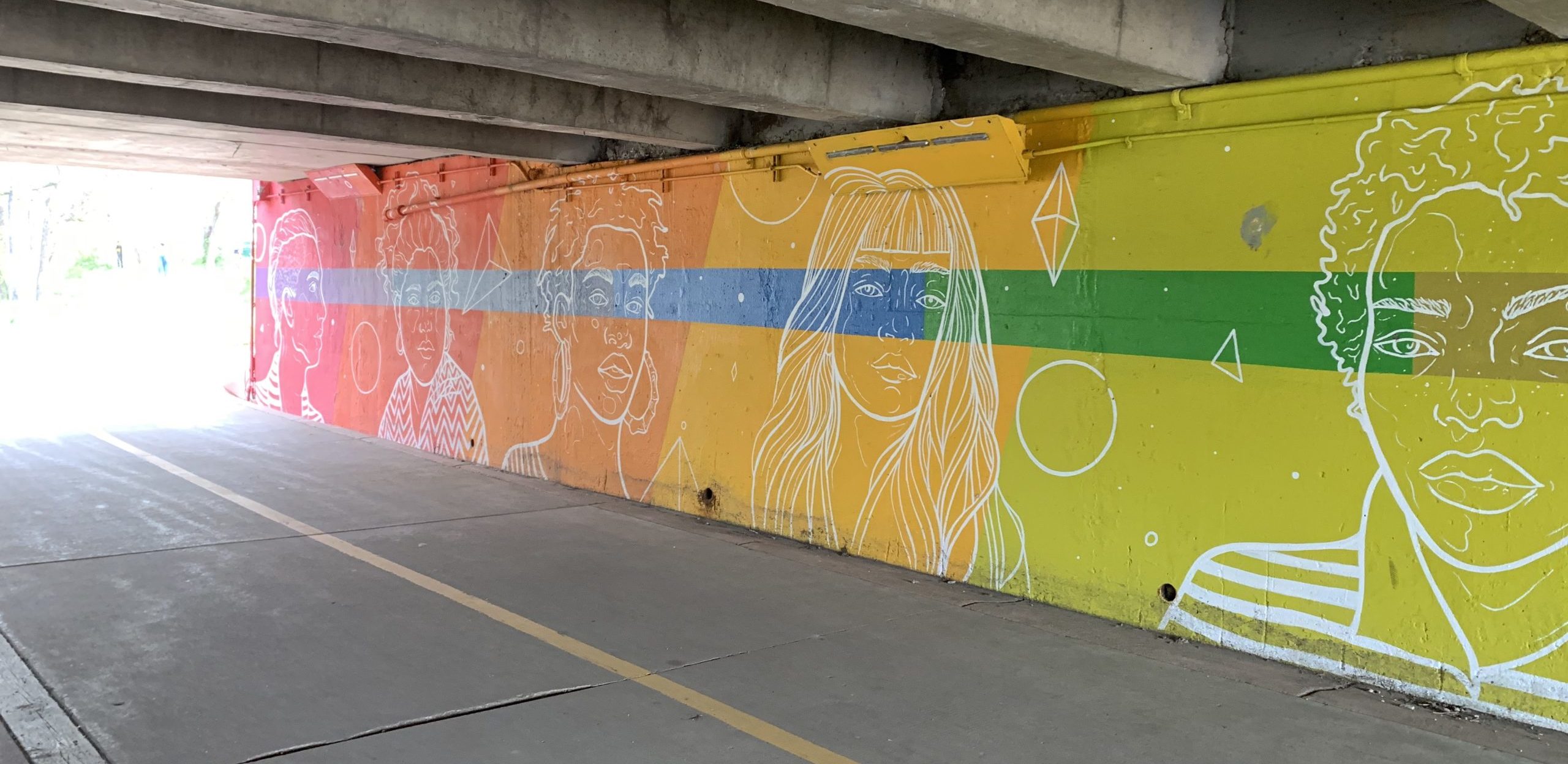
(Project by Lindee Zimmer. Located on the Boulder Creek Path under 30th St)
- Mural by Workshop 8, www.workshop8.us, near 55th and Baseline
Check out these maps to find some of the art around town!
- https://streetwisearts.org/mural-map
- https://www.streetwiseboulder.com/muralmap
- Public Art Directory
- Creative Neighborhood Art
Art organizations around Boulder:
- NOBO Art District
- Boulder Arts and Culture: Public Art
- Street Wise Arts/ Street Wise Boulder
- Workshop8
- Open Studios
- Boulder County Arts Alliance
- Dairy Arts Center
- Creativity Alive
- Boulder Creative Collection: Alt.Art Program
Looking to get involved? Check HERE for opportunities.
- Mural neaer Elmers Two-Mile Park. Artist unknown.
(All artists are compensated for their time and work. All photos in this article are of murals and sculptures along the paths. There is much more art all around Boulder, not just on the paths.)
(Mural series along the Goose Creek Path, artist unknown)
REFERENCES
- Community Cultural Plan, City of Boulder, 2015
- Boulder Municipal Code, Title 14: Arts
- Public Art Implementation Plan, City of Boulder Office of Arts and Culture, 2018-2019 Updates
- Policy on Acquisition and Maintenance of Public Art by the City, City of Boulder, 2018
- Visual Arts Cork
SPECIAL THANKS
- Mindy Vink
- Leah Brenner Clack
- Annette Coleman
- Sandra Fettingis
- On Goose Creek Path near 30th St
